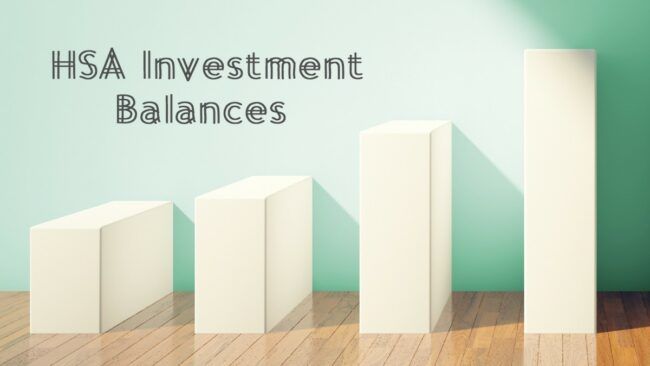Stay connected
Subscribe to our health benefits blog and follow us on social media to receive all our health benefits industry insights.

Although many health savings account (HSA) owners fund their accounts only to pay their current expenses with pre-tax dollars, a growing number of accountholders are beginning to accumulate balances and invest those funds as they do balances in other long-term vehicles like qualified retirement accounts.
According to industry analysts at Devenir, there are now more than 26 million health savings accounts, holding $61.7 billion in assets. HSA investments assets grew to an estimated $13.3 billion at the end of June 2019, which is up 35 percent year-over-year. That figure represents an increase from $4.2 billion only three years before and about $200 million in 2008.
What’s driving this growth? Let’s look at three important factors.
The first HSAs were opened in 2004. Devenir’s research shows that average HSA balances increase every year—so, the older the account, the higher the balance. In fact, HSAs that have balances invested in mutual funds have an average balance of nearly $16,000, according to Devenir.
Let’s look at key drivers of this growth.
First, more people are being offered, and choosing to enroll in HSA-qualified plans. Devenir projects that the HSA market will approach $75 billion in HSA assets by the end of 2020, held among roughly 30 million accounts.
And, once people make that move from traditional group coverage, where they might have even been over-insured, they gain an appreciation for the opportunity to pay less to insurance companies in the form of premiums and to contribute that difference into their HSA to cover routine expenses.
As patients spend their own money, they become more prudent consumers of medical care. They’re more likely to: self-treat or self-prescribe watchful waiting for routine conditions; discuss treatment options with their doctors and choose more conservative treatment options first; and shop around for services that they consider commodities, such as lab tests and imaging.
Only in the last two years or so have financial professionals fully understood the power of HSAs. Traditional retirement planning has focused on whether to advise clients to receive an income tax deduction on retirement contributions using traditional or Roth 401(k) plans or IRAs, most of which are not subject to either income taxes or taxes upon withdrawals, or both.
In contrast, federal income and payroll taxes and state income taxes (except in California and New Jersey) aren’t applied to HSA contributions. HSA balances enjoy the same tax-deferred benefits as qualified retirement plans. And distributions are tax-free when they reimburse qualified expenses like Medicare premiums, Medicare cost-sharing and services that Medicare doesn’t cover, like dental, vision, hearing aids and over-the-counter equipment and supplies.
Financial advisors are increasingly aware of the estimates of retirement medical expenses (Fidelity projects that a couple retiring this year will spend $285,000 on medical expenses during their retirement.) Because HSAs have favorable tax treatment of both contributions and distributions, HSA balances last longer and buy more qualified services than the same funds when deposited into traditional retirement accounts.
In recent years, HSA administrators have made investment more attractive by increasing the number of mutual funds offered. A growing number offer a brokerage option that allows owners to invest in common stocks. And some offer investment advising services, usually for a fee based on a percentage of assets managed.
And many HSA administrators now offer a feature that automatically moves new contributions directly to investments options set by the owner. This set-it-and-forget-it feature ensures that new contributions don’t sit idle in cash if the owner wants to invest excess balances.
What’s next for HSAs as investments
The next generation of innovation will integrate HSAs and qualified retirement plans on a single platform with identical investment options. That way, each HSA owner can choose whether to invest the next dollar of retirement savings in a qualified retirement plan or an HSA.
This approach reinforces all three of the trends listed above:
William G. (Bill) Stuart is director of strategy and compliance at Benefit Strategies, LLC, a long-time WEX Health partner. His book, HSAs: The Tax-Perfect Retirement Account, educates financial advisors, benefits advisors, employers, and current and prospective HSA owners on the intersection of HSAs and Medicare, as well as the benefits of HSAs as retirement accounts. The book is available on Amazon.
Subscribe to our health benefits blog and follow us on social media to receive all our health benefits industry insights.